UTSW community celebrates the diversity of Hispanic-Latino cultures
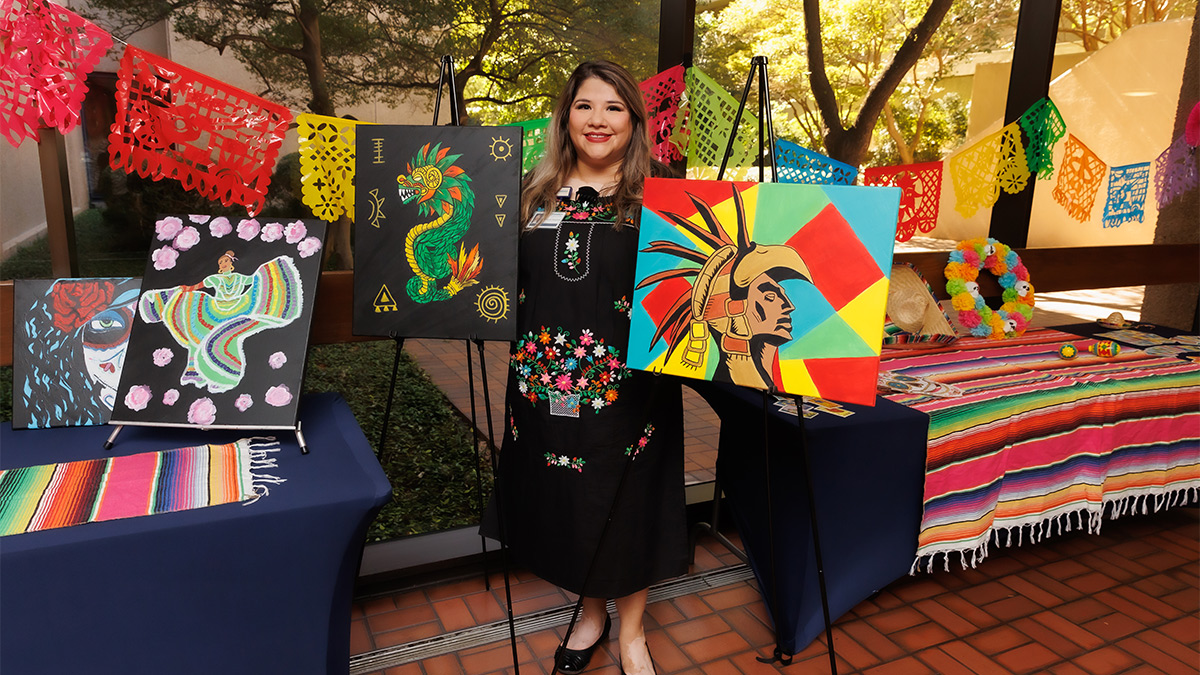
Hispanic-Latino food, music, discussion, and art were all part of the celebration on Oct. 12 as the UT Southwestern community gathered online and in person for National Hispanic Heritage Month to pay tribute to the contributions and challenges of those whose ancestors came from Spain, Mexico, the Caribbean, Central America, and South America.
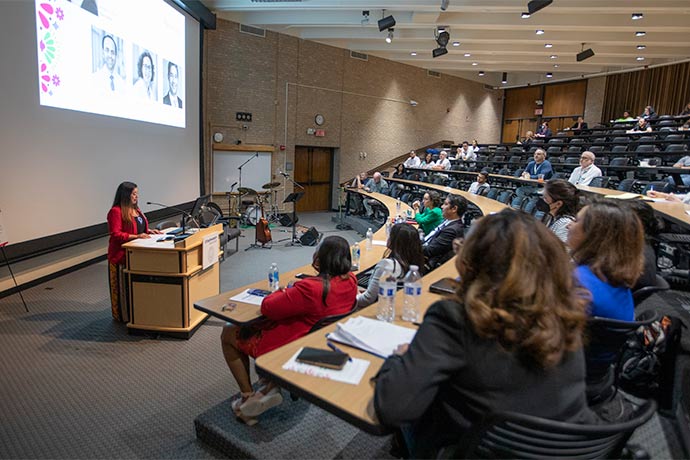
The UTSW event, called Unidos: Inclusivity for a Stronger Nation, and using the more inclusive term “Hispanic-Latino Heritage Month,” was part of a nationally designated month that ran Sept. 15 to Oct. 15 – a period when many Latin American countries celebrate their independence from Spain in the 1800s.
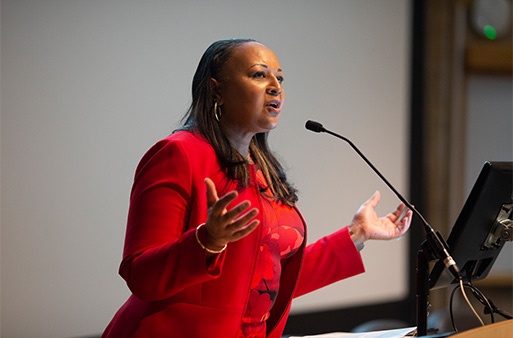
Celebrating such diversity, as well as the contributions of Hispanic-Latino communities on campus, is important as the University recognizes and embraces the benefits of a more inclusive and diverse culture, said Shawna Nesbitt, M.D., inaugural Vice President and Chief Diversity, Equity, and Inclusion Officer at UT Southwestern. Almost 17% of UTSW employees identify as Hispanic or Latino, she said.
“UT Southwestern is you. UT Southwestern is me. UT Southwestern is all of us,” said Dr. Nesbitt, also a Professor of Internal Medicine. “It’s all the beauty, the innovativeness, the talent, and the compassion that is born out of the mosaic of this community.”
Three speakers on a panel for the South Campus celebration pointed out that those who identify as Hispanic or Latino are not one homogenous group.
“We’re considered the same and we’re not. Everybody brings a different flavor to the table,” said speaker Roberto Gonzalez, M.D., Principal of the new Biomedical Preparatory at UT Southwestern on Forest Park Road in Dallas. The school, which opened Aug. 15, is the result of a partnership between UT Southwestern and the Dallas Independent School District (DISD).
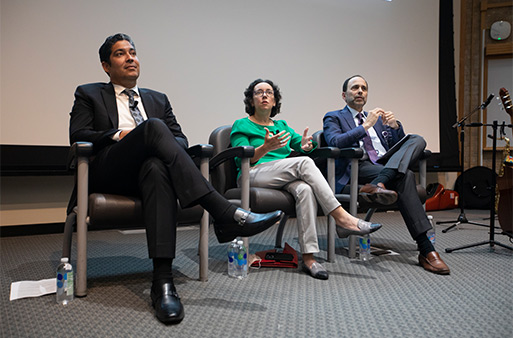
“We might share a few things – maybe the accent, or how we look, or how we embrace family,” added speaker Larissa Velez, M.D., Associate Dean for Graduate Medical Education and a Professor of Emergency Medicine at UT Southwestern. “But we are very different.”
In fact, the panel itself demonstrated that difference. While Dr. Gonzalez was born in Colombia, South America, Dr. Velez is originally from Puerto Rico, a Caribbean island and territory of the United States. Carlos Girod, M.D., the third member of the panel, is also a Puerto Rico native. He serves as Professor of Internal Medicine at UTSW and Associate Vice President for Clinical Affairs at Parkland Health for UTSW.
Dr. Velez said her ability to become an associate dean relates directly to the people who helped her along the way.
The fact that others did the hard work to enable Hispanic-Latinos to advance led Dr. Gonzalez to his current position today, he said. Dr. Gonzalez practiced medicine in Colombia before moving to the U.S. and becoming an educator. “We just created one of the most diverse schools in the (DISD) district and the state and maybe in the United States as a whole,” he said of the school he now leads, which has a student body that is almost 45% Hispanic and about 18% Black.
With more than 60 million people in the United States identifying as Hispanic or Latino, the diversity they bring enhances our communities and the world, Dr. Girod said.
“When I see a Hispanic or Latino patient and I introduce myself in Spanish instead of English, you see them beaming,” said Dr. Velez. “They have a doctor who sounds and looks like them.”
Because others paved the way for their own successes, the panelists said it is incumbent upon the Hispanics and Latinos in the audience and at UT Southwestern to go into the community and schools to share the stories of their history and cultural background. “People will learn from you, and you’ll be role models for generations that are coming up in health care,” said Dr. Velez.
Recruiting more minorities for all types of positions at UT Southwestern – from the top down – is a priority, Dr. Girod said. That will send this important message to others looking at UTSW for education or employment: “I can make it at this institution. There are faculty who look like me,” he said.
“You want to make a difference?” Dr. Gonzalez asked as the program neared its end, prodding his audience to reach out to students at his school. “The time is now,” he said.
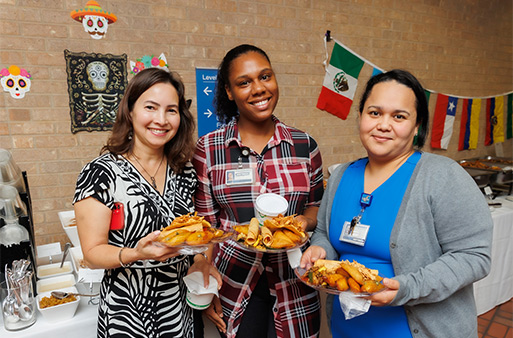
The fourth annual event at UT Southwestern was hosted by the Office of Institutional Equity & Access’ Division of Diversity and Inclusion and the Hispanic-Latino Business Resource Group (BRG).
Those attending were treated to a reception featuring Mexican flautas, Cuban black bean soup, Caribbean sweet plantains, and other ethnic delicacies, as well as a display of Hispanic- and Latino-inspired paintings by Stephanie Hargrove, a Talent Acquisition Partner in Human Resources.
During the celebration, Jan Garcia, a Clinical Research Coordinator and Hispanic-Latino BRG member, sang the Latin songs La Llorona (The Weeping Woman) and Bésame Mucho (Kiss Me a Lot). She was accompanied on tenor saxophone by Jacob Frie, a Senior Business Analyst, and on drums by Mike Askins, the husband of Andrea Askins, Lead Talent Acquisition Partner and Chair of the Hispanic-Latino BRG.
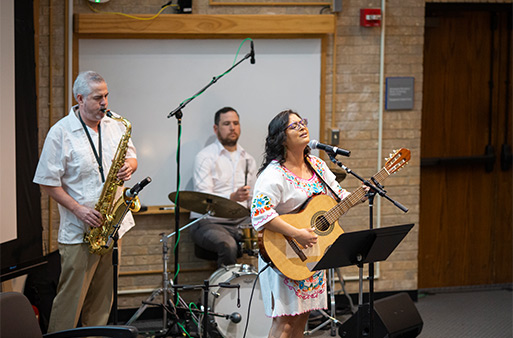
Dr. Girod holds the Ron Anderson, M.D. Professorship in Clinical Care and Education at Parkland Memorial Hospital.
Dr. Velez holds the A. Compton Broders III, M.D. Chair in Emergency Medicine.

